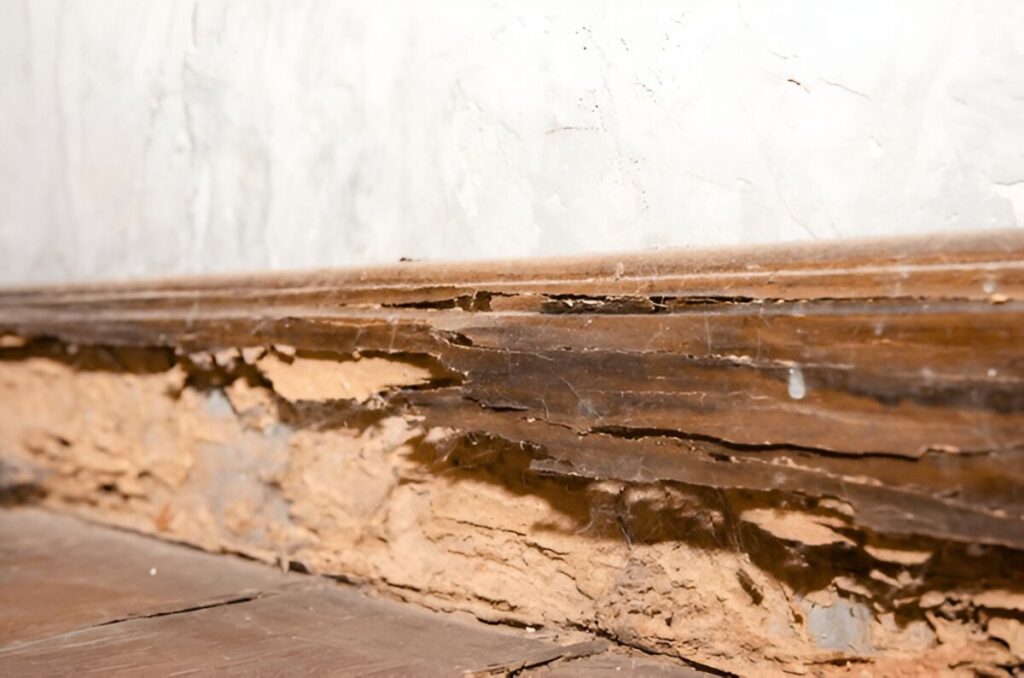Drywood termites are silent invaders. They can wreak havoc on your home without your immediate knowledge of the situation. Their destruction is sometimes not as obvious upon first view, which makes it important to know what to look for. Take a look at this photo guide that will show you typical types of damage from drywood termites—from hollowed wood to weakened structures—so you might identify the problem early and take action.
- Hollowed Wood

Once again, a sign of drywood termite damage is hollowed wood. Since drywood termites do not need water in order to survive, they can tunnel further into the wood than subterranean termites. After a period of time, they create tunnels and galleries, leaving nothing behind but air.
Damaged Tip:
Check for small holes in wood furniture, beams, and door frames. Many times these are actually termite entry points.
2. Compromised Structural Integrity

As termites tunnel deeper into the wood, they compromise the strength in the wooden beams, flooring, and even support structures. If it is left unmanaged for months or even years, this may cause serious structural damage.
Damage Tip:
If a weakened structure does not suddenly collapse, small leakage and repairs over time will add up to major repairs or replacements.
3. Frass – Termite Droppings

Like other drywood termites, they do not build the characteristic mud tubes of subterranean termites but leave behind a telltale trail of frass—small, wood-colored droppings that resemble sawdust. This is one of the major indicators of an active infection.
Damage Tip:
If you notice piles of frass, check for further signs of damage on nearby wooden furniture or walls.
4, Blistered/Bubbly-Surfaced Wood
Since termites burrow through the wood, infested wood often takes on the appearance of being blistered or bubbled, depending on how far it has progressed. This happens as termites feed underneath the surface, and the resultant pressure warps the wood.
Damage Tip:
Look for painted or varnished surfaces showing uneven textures because termites can eat beneath the surface.
5. Cracks in Wooden Furniture
Termites may also infest wood furniture pieces, particularly older ones. In time, fissures and cracks come in the wood that might lead to affecting the furniture concerning its appearance and structural integrity.
Damage Tip:
Be certain to make regular checks of older or antique wood furniture for signs of termites since these often contain dry, untreated wood that is more appealing to them.
Why You Should Pay Attention to Termite Damage
Drywood termite damage has to be identified early to avoid expensive repairs. Termites might be tough to find, but many signs of their activity are very visible if one knows just what to look for. With this visual guide, a homeowner can identify the potential issue and call the pest control professionals before severe damage is caused.
Final Words
Drywood termite damage is devastating; however, early identification may save you from incurring major repair costs. Pay close attention to the aforementioned signs, and in suspicion of some kind of damage, without any delay, call for a pest control professional. In this way, vigilance will help you save your home from silent destroyers.


